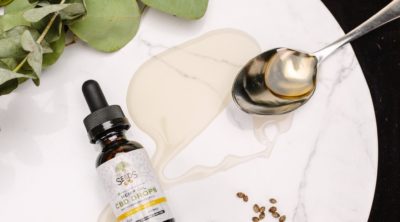
Boils on buttocks may make sitting or sleeping a painful and discomforting chore. In most cases, you can take care of smaller boils by following a few self care measures at home, such as the ones mentioned in this article.
Boils are caused by the staph bacteria (staphylococcus aureus). These bacteria are a normal part of the skin flora, and are harmless. But they may enter the skin and into deeper tissues through cut or other breaks in the skin. So when the staph bacteria infect one or more hair follicles, the skin around the infected area turns red and develops a tender lump. This is known as a boil. With time, the boil inflames and starts getting filled with pus. The boil keeps getting larger and more painful. It develops a yellow-white tip just before it is ready to rupture and drain. In some people, several boils may appear in a group or cluster. This is a more severe infection known as a carbuncle, and should be treated by a medical expert.
Tips for Treating Boils
A boil usually heals on its own. But once it develops a yellow-white tip, it can be drained naturally by following a few self-care measures at home. Draining the pus relieves pain and encourages healing.
» Soak a clean washcloth in warm water, wring it and place it over the boil. Do this for about 10 minutes and repeat 3-4 times a day. The warmth will increase the blood circulation around the boil, and this will help draw more pus to the surface until the boil ruptures on its own and drains.
» While the boil is draining, you can wash it with lukewarm water and antibacterial soap. Ensure that all the pus has drained. You can continue to apply warm wet compress to the affected area to speed up healing.
» To curb the spread of infection, apply a medicated ointment to the area and cover it with a sterile gauze.
» Wash your hands thoroughly with antibacterial soap or solution after the procedure. Also get any washcloth that you have used to drain the boil, washed thoroughly with hot water.
» Never use any sharp objects like a needle to drain the boil, especially when the boil has not yet developed its yellow-white tip. Doing so may make the condition worse and spread the infection.
Important
Boils that are large and do not heal even after 2 weeks, need to be treated by a doctor. Such boils are less likely to drain by themselves. To drain the boil, a surgeon may make an incision using a sterilized needle. Antibiotics are used in cases where there is a risk of severe infection. Carbuncles also require medical aid as they carry higher risk of infection.
Alternative Treatment Methods
Apart from the self-care measures mentioned above, there are some more methods that can help treat boils at home. The methods are as follows:
» Immerse a cup in a bowl of hot water and let it sit for some time. Take the cup out of the water and let it cool down a bit. See that the cup does not get too cold. Place the cup over the boil for some time. The heat will produce suction and encourage the flow of blood and circulation in the area and stimulate drainage.
» You can get some fresh thick slices of onion and place them over the boil. Cover the area with a cloth. The chemicals in the onion will bring the boil to a head and cause it to drain.
Although you cannot always prevent the occurrence of boils on your buttocks or elsewhere, you can definitely cut down the risk of infection. Any cuts, bruises or breaks in the skin must be washed well with soap and water, and treated with anti-septic or antibiotic ointment as soon as possible. Wounds must always be covered and never left open, especially, when you are out. Refrain from sharing personal items and inculcate a habit of keeping your hands clean and dry all the time.
Disclaimer: The information provided in this article is solely for educating the reader. It is not intended to be a substitute for the advice of a medical expert.


